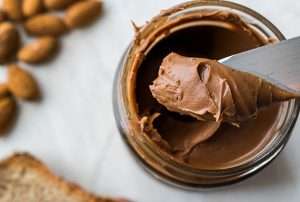Alkaline Diet – Facts, Benefits and Sources

Back in the school days, you must have come across ‘acids’ and ‘alkalis’. For those who don’t remember it clearly let’s refresh our memory a bit. Acids and alkalis are substances found in nature. They are measured on a pH scale that determines if they are acidic or alkaline, which can give us an idea about their reactivity.
As per the scale, a pH of ‘0’ is considered the most acidic and a pH of ‘14’ is considered the most alkaline. Water which has a pH of 7 is considered neutral. Anything above 7 is alkaline in nature.
Our human body is slightly alkaline with a pH of around 7.4. But our stomachs, in particular, are acidic in nature with a pH of 2-3.5, which is kind of required to breakdown the food.
Now, the pH of urine and saliva can change depending on what you’re eating and the medications you’re taking. But the pH of blood in your body pretty much remains the same. In general, it is slightly more alkaline in nature with a pH value of around 7.36-7.44, which is what determines the overall health or well-being of a person.
What is an alkaline diet?
An alkaline diet promotes the consumption of fresh fruit juices, vegetables, seeds and nuts by cutting down on sugary and processed food like dairy, caffeine, sweets and alcohol. It is based on the premise that replacing acid-forming foods with alkaline foods can benefit our health in positive ways.
The followers of this diet claim that this diet can alter the pH value of the body by consuming more alkaline based food, which is based on how the metabolic process works. After the breakdown of food, metabolic ashes are left in the body, which can be either acidic or alkaline, depending on the nature of the food item.
Acidic ashes can damage the body and leave it susceptible to many diseases. Whereas, foods that leave an alkaline residue is considered to have a protective effect on the body.
Generally, food components like protein, phosphate, and sulphur are prone to leave an acidic residue, whereas calcium, magnesium and potassium produce alkaline ashes in your body.
All kinds of food that we eat can be categorised as acids, bases (alkalis) or neutral. Some common examples would be:
Acidic: meat, fish, poultry, dairy, eggs, grains, alcohol
Neutral: Natural fats, starches, and sugar
Alkaline: fruits, vegetables, legumes and nuts
But can alkaline diet actually change blood pH?
Truth be told, no, they don’t. That’s because our body’s pH is very closely regulated. Even a minor drop in the normal range can prove to be fatal as our cells would stop working.
Because it is so important our bodies acutely monitors and manages these changes, a process known as the acid-base homeostasis.
In fact, scientifically speaking it is not possible for food to change the pH value of blood unless affected by any serious medical condition like diabetes, excessive alcohol intake or serious form of starvation.
However, food does impact the pH of urine. For example, having consumed large amounts of proteins like meat and steak can cause your urine pH to remain acidic for several hours later.
In fact, excreting acids in the form of urine is the body’s way of maintaining optimal levels of blood pH.
Does that mean alkaline diet provide no benefit?
No, absolutely not. Following an alkaline diet alone is never a good idea, to begin with. What is indeed required is a healthy balance of nutrition-specific to your body requirements, which includes nutrition from lean protein sources, nuts, legumes, fresh vegetables and elimination of processed and packaged food items from your list.
Those who follow the diet have stayed with it for the many positive changes they personally experienced. Things like lack of energy, fatigue, difficulty in concentration, radiant and glowy skin, weight loss and good mood are some of the benefits they would swear by.
Let’s take a further look at the benefits of an alkaline diet:
1. More energy
Alkaline diets can help you balance your system by flushing out excess acid from the body in the form of urine. As you continue to consume your green juices, it gets easier for the body to absorb the nutrients and result in a surge of energy.
2. Helps in weight-loss
An alkaline diet is a low-calorie high nutrient diet. Coupling your alkaline juices with regular exercise and proper hydration can give you great results.
A lot of the acids are stored in the fat cells, which when left for a longer period can damage the other cells in the body. But regular intake of green juices can help you eliminate that and give you a lean body.
3. Reduces inflammation:
Inflammation has been known to be the marker of many diseases like hypertension, cardiovascular diseases, reflux and gastrointestinal diseases. Reflux diseases or acid reflux is when the acid in your stomach reaches the oesophagus and causes irritation. Over time, this can lead to scarring of the oesophagus walls and become more serious.
While processed foods are known to increase the body’s inflammatory response, alkaline diet helps to do just the opposite. Following an alkaline diet can help to inactivate pepsin (a stomach enzyme that loves acid) and buffer the production of HCl, a stomach acid overproduced in people with reflux disease.
4. Is loaded with natural vitamins and minerals:
An alkaline diet is rich in potassium, magnesium, calcium, vitamin A, C, K and a host of other micronutrients that is essential for the body. They support the body by improving your eyesight, keeping your bones, gums and teeth healthy and making your skin glow from within.
They are rich in phytonutrients, antioxidants, natural minerals and active plant enzymes that are easily assimilated by the body and help you fight oxidative stress and boost immunity.
5. Improves bone density and vitamin absorption
Leafy greens are good sources of calcium, which helps in building bones. They contain vitamin C that acts as an antioxidant to protect the bones from cell damage.
High amounts of potassium present in vegetables helps to promote the absorption of calcium. Finally, high levels of magnesium in alkaline foods helps to convert Vitamin D into its active form, which goes onto ‘turn on’ calcium absorption and prevents mineral loss from your bones.
Best sources and List of alkaline foods to include in your diet:
There is a more accurate way to categorise foods as acidic or alkaline. PRAL (Potential Renal Acid Load) can help us measure the exact amount of acidity and alkalinity in food items once metabolised. A negative PRAL score is indicative of alkaline food, while positive goes for being acidic. Let’s check out some of the top alkaline foods there is:
- Beet Greens – PRAL score: -16.7
- Spinach – PRAL score: -11.8
- Kale – PRAL score: -8.3
- Swiss Chard – PRAL score: -8.1
- Bananas – PRAL score: -6.9
- Celery – PRAL score:-5.2
- Kiwi – PRAL score: -4.1
- Pineapple – PRAL score: -2.7
- Zucchini – PRAL score:-2.6
- Apples- PRAL score: 2.2
Try PLIX Green Elixir multivitamin supplements packed with the power of 21 superfoods in delicious lemon flavour. Get your hands on easy to consume, fizzy effervescent tablets that work in just 30 seconds.
You can also buy our immunity-boosting super greens from Amazon here.















